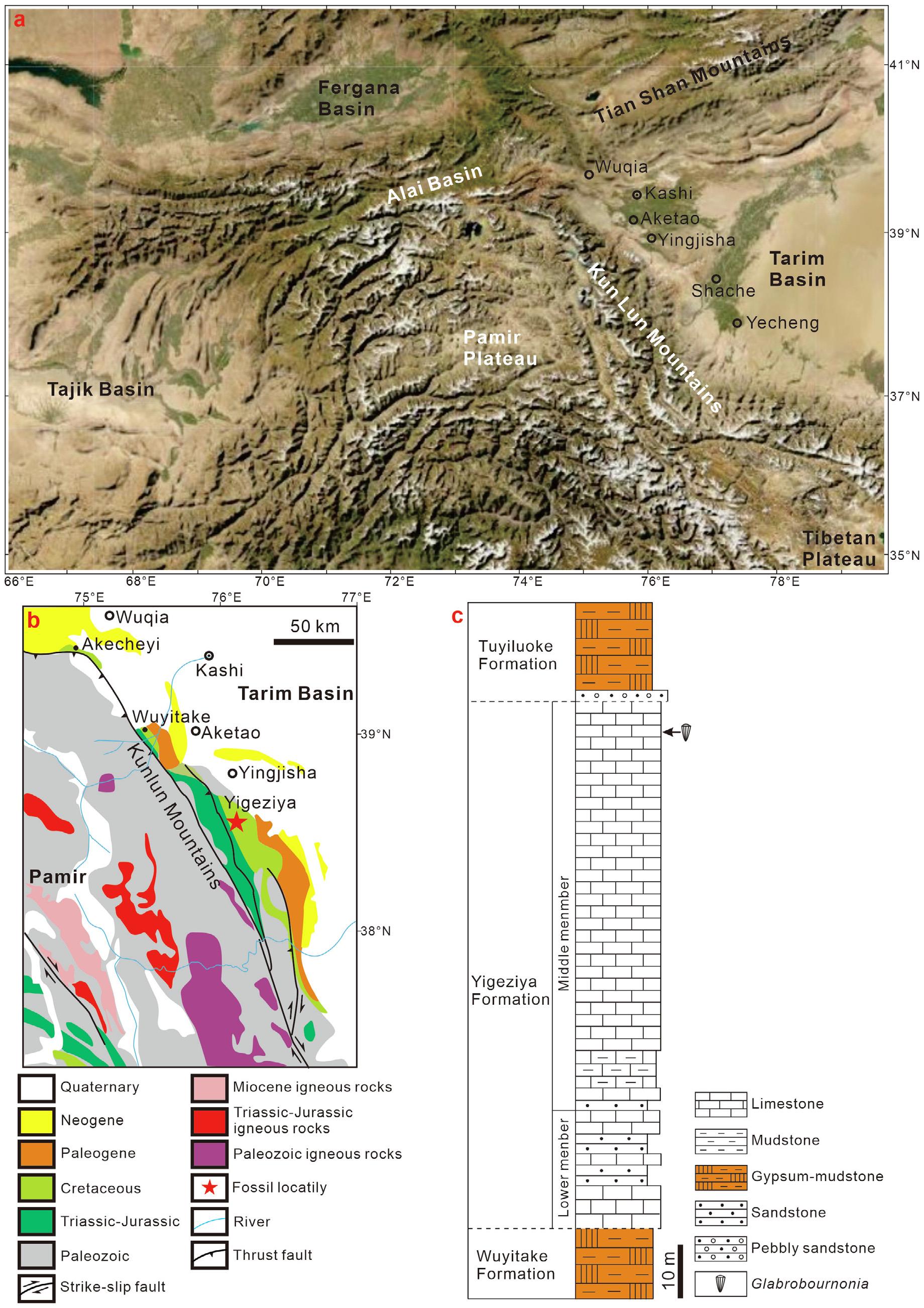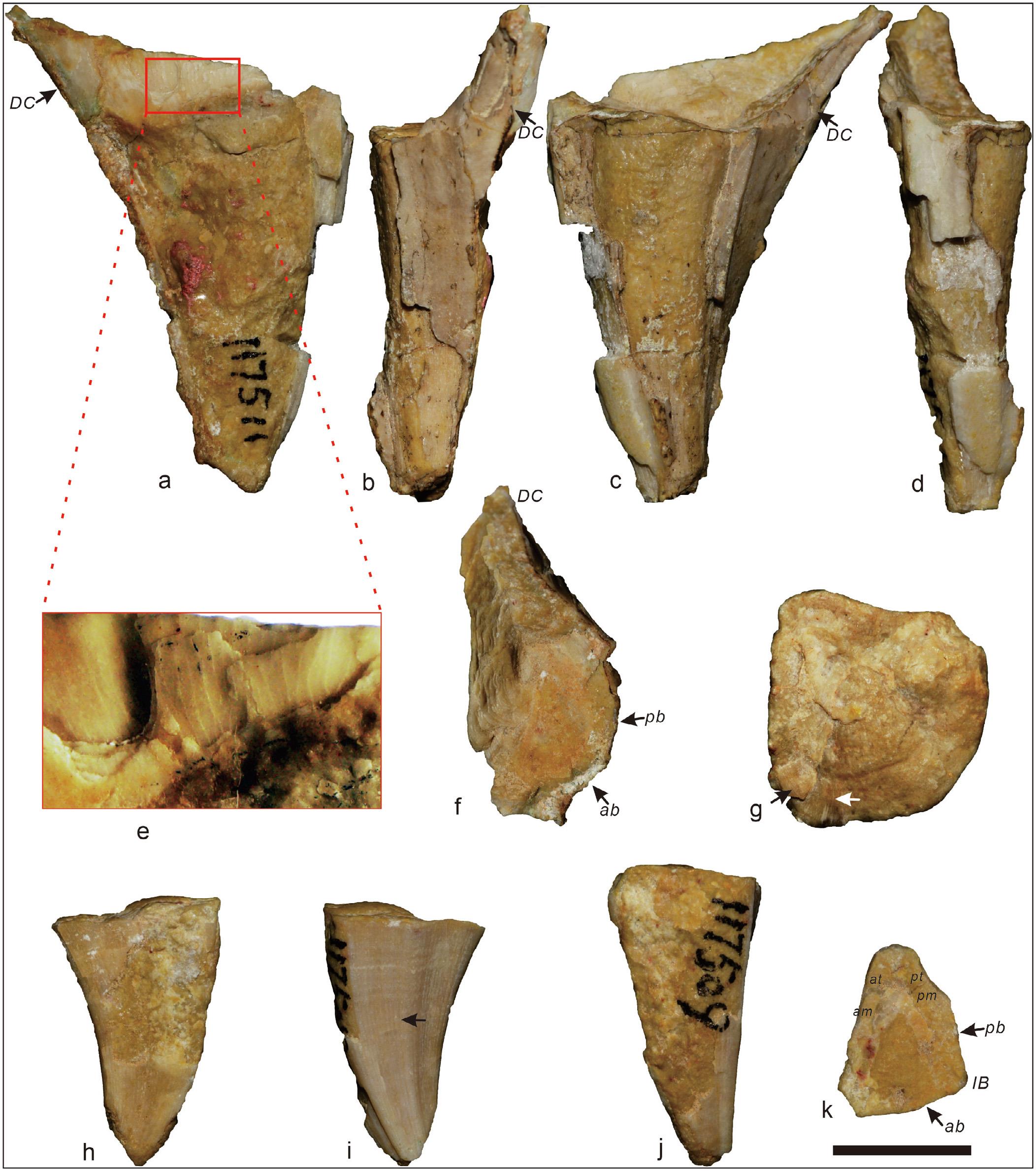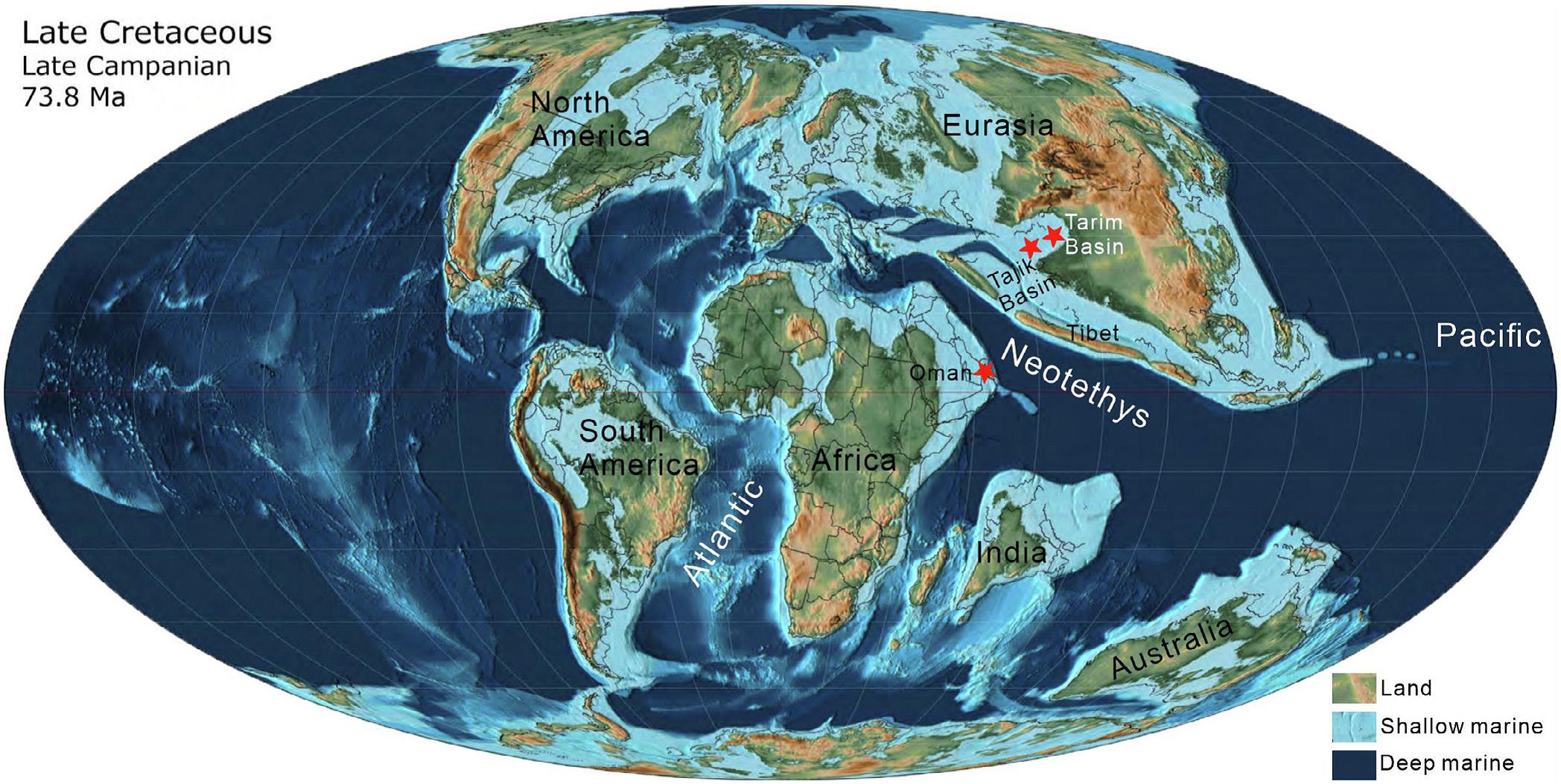During Cretaceous to Paleogene, a shallow epicontinental sea extended across Eurasia from the Mediterranean Tethys to the southwestern Tarim Basin, and its eastern extremity being referred to as the Tarim Sea, which was commonly regarded as a branch of the Neotethys. During Late Cretaceous, two distinct transgressive events have been identified in Tarim Sea: the first is represented by the deposition of early Cenomanian to Turonian Kukebai Formation, and the second formed the Campanian to early Maastrichtian Yigeziya Formation. Abundant rudist bivalves have been reported from the Yigeziya Formation, most of them were considered as endemic taxa that were restricted to central Asia including Tajik, Fergana, Alai and Tarim basins.
Biradiolites minor Pojarkova, described by Lan and Wei (1995) from the middle member of the Yigeziya Formation, is characterized by the glabrous outer shell layer except for four salient ridges on the shell margin of the right valve. This feature is inconsistent with the genus Biradiolites d’Orbigny which is normally ornamented with strongly protruding longitudinal ridges over the whole right valve.
Recently, Dr. RAO Xin from the Nanjing Institute of Geology and Palaeontology, Chinese Academy of Sciences (NIGPAS) and her colleagues re-studied the species B. minor based on the published and new specimens, transferred it to the genus Glabrobournonia according to the taxonomic re-examination.
Glabrobournonia is a genus of radiolitids characterized by indented radial bands, salient ridges on the shell margins and absence of fine ribs on the surface of the right valve. Apart from southwestern Tarim Basin, Glabrobournonia minor (Pojarkova) has also been recorded from the late Campanian of Fergana and Alai basins. The central Asian, late Campanian to early Maastrichtian G. minor differs from the late Campanian to Maastrichtian, eastern Arabian type species Glabrobournonia arabica Morris and Skelton in the flat left valve and an additional fourth ridge on the junction of the dorsal and posterior sides of the right valve. Biradiolites ingens (Des Moulins) could be the direct ancestor of Glabrobournonia.
The paleogeographic distribution of Glabrobournonia suggests that this genus dispersed to central Asia from the late Campanian time, becoming widely distributed in the eastern Tethyan region rather than endemic to eastern Arabia. Correspondingly, specimens belonging to Gyropleura yielded from the same bed as G. minor in southwestern Tarim Basin, are similar to the specimens which were attributed to the eastern Arabian Gyropleura sp.; Campanian to early Maastrichtian Osculigera specimens described from the Yigeziya Formation are comparable with those known from the Campanian–Maastrichtian of Iran, Afghanistan and eastern Arabia. The similarity of the rudist assemblages between central Asia and eastern Arabia suggests a faunal connection and affinity between the north and south margins of the eastern Tethyan realm during Campanian to early Maastrichtian times.
This work was supported by the Strategic Priority Research Program of the Chinese Academy of Sciences, the Second Tibetan Plateau Scientific Expedition and Research, the National Natural Science Foundation of China, and the State Key Laboratory of Palaeobiology and Stratigraphy, Chinese Academy of Sciences.
Reference: X. Rao, P. W. Skelton, S. Sano et al., Taxonomy and paleobiogeographic implication of Glabrobournonia Morris and Skelton (Hippuritida, Radiolitidae) from the Late Cretaceous Yigeziya Formation, southwestern Tarim Basin, Palaeoworld, https://doi.org/10.1016/j.palwor.2022.05.003.

Fig. 1. (a) Map of the southwestern Tarim Basin and adjacent basins bearing Late Cretaceous rudists. (b) Geologic map showing the fossil locality in southwestern Tarim Basin. (c) Stratigraphic column of the Yigeziya section and the occurrence of Glabrobournonia minor within the section.

Fig. 2. Glabrobournonia minor (Pojarkova) from the Yigeziya Formation of the Yingjisha County, southwestern Tarim Basin. Scale bar represents 10 mm.

Fig. 3. Paleogeographic map of late Campanian showing the reconstructed situations of the fossil localities bearing Glabrobournonia (base map after Scotese, 2014).
Contact:
LIU Yun, Propagandist
Email: yunliu@nigpas.ac.cn
Nanjing Institute of Geology and Palaeontology, Chinese Academy of Sciences
Nanjing, Jiangsu 210008, China
